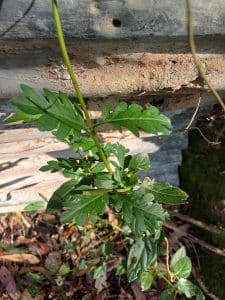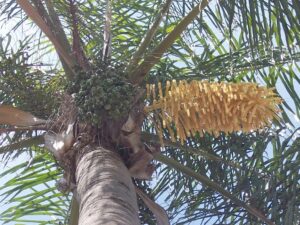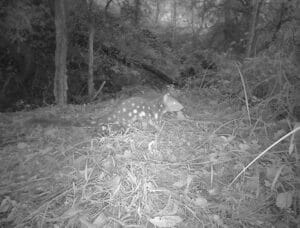It loves moist areas and is a particular threat to riparian bushland. As well as rapid vegetative spread, it propagates readily from broken off fragments of stem, and also produces little black berries that are highly toxic to humans but are spread by birds.
If you spot a new infestation of this weed, treat it with extreme prejudice! If it is already established, it should be a priority for active containment, and eventual eradication if possible. Control is difficult – spraying with metsulfuron methyl has been known to work, but is fraut with off-target damage, and should never be done over or close to waterways. The treatment of choice is either very careful hand removal (full removal from site best, otherwise securely rafted high and dry) or very thorough stem scrape application of neat glyphosate with a dripper applicator. Larger woody stems can be cut and paint treated, but stem scraping close to root nodes is also needed.

Watch out for Honeysuckle’s strange habit of producing new foliage with an entirely different leaf shape – this image was taken at Nabiac Landcare’s Woosters Creek regen site.
For more information see NSW Weedwise https://weeds.dpi.nsw.gov.au/Weeds/JapaneseHoneysuckle




